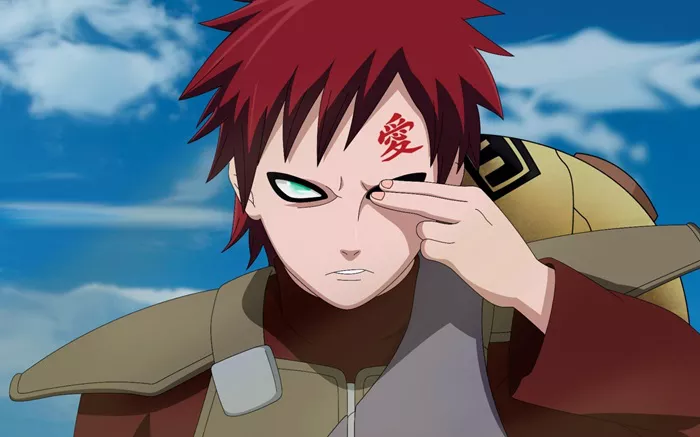In the world of anime and manga, few characters have experienced a transformation as profound and impactful as Gaara from “Naruto.” Created by Masashi Kishimoto, Gaara initially appears as a villain in the series, but gradually becomes one of the most beloved and complex characters in Naruto’s universe. His story is marked by tragedy, struggle, and eventual triumph. The queastion may rise: who killed Gaara? This article explores the pivotal moments in Gaara’s life, focusing particularly on the misunderstanding surrounding the notion of his death, his actual confrontations, and his journey from solitude to becoming the Kazekage of the Hidden Sand Village.
Gaara’s Early Life: The Seeds of Solitude
The Birth of a Jinchuriki
Gaara was born in the Hidden Sand Village as the youngest son of the Fourth Kazekage. From birth, he was destined for a solitary and challenging life; Gaara was chosen to become a Jinchuriki—the host for the One-Tail beast, Shukaku. This decision was made in the hopes that he would become a powerful weapon for the village. However, this action only served to isolate Gaara from his community and even his own family.
Tragedy and Isolation
From an early age, Gaara faced immense prejudice and fear from the villagers, who regarded him with suspicion and disdain due to the beast sealed within him. His own family was no different, with his father often regarding him as nothing more than a tool. The turning point in his young life was the betrayal by his uncle Yashamaru, who was ordered by the Fourth Kazekage to test Gaara’s emotional stability. The assassination attempt failed, but it left a deep scar in Gaara’s heart, leading him to adopt a defensive and violent approach to the world around him.
Gaara in the Chunin Exams: The First Major Turnaround
Encounter with Naruto Uzumaki
The Chunin Exams arc serves as a crucial narrative pivot in “Naruto,” where Gaara’s character is explored in depth. It is during these exams that Gaara encounters Naruto Uzumaki, the protagonist and fellow Jinchuriki. Their initial battles are fierce, with Gaara using the full extent of his powers. However, it is Naruto’s unyielding spirit and empathy towards Gaara’s loneliness that ignite the first change in him.
From Enemy to Ally
Naruto’s influence and the confrontation between them during the exams sow the seeds for Gaara’s redemption. Understanding that he is not alone in his suffering and that he can choose a different path, Gaara begins to change. His transformation is further solidified by his interactions with other key characters, who show him understanding and acceptance.
Gaara’s Ascension to Kazekage
Responsibility and Redemption
Gaara’s growth is evident when he is appointed as the Fifth Kazekage of the Hidden Sand. His leadership is marked by a deep commitment to the welfare of his village, starkly contrasting with his former self, who cared for nothing but his own survival. As Kazekage, Gaara strives to implement policies that foster peace and cooperation among the ninja villages.
The Misunderstanding of His Death
The Attack by Akatsuki
Gaara’s supposed death is a significant event in the “Naruto Shippuden” series and stems from the attack by the Akatsuki organization. Deidara, a member of Akatsuki, confronts Gaara in an epic battle, primarily to capture him and extract the One-Tail beast. Gaara sacrifices himself to protect the village, and in the aftermath of the battle, he is indeed believed dead.
Resurrection by Chiyo
The misunderstanding about Gaara’s death is clarified with the intervention of Chiyo, an elder of the Sand Village. She uses a life-transferring technique to revive Gaara at the cost of her own life. This act of sacrifice profoundly affects Gaara, highlighting the themes of life, death, and rebirth prevalent in his storyline.
Gaara’s Legacy and Impact
Influence on Other Characters
Gaara’s journey from a feared outcast to a revered leader and ally significantly impacts other characters in the series. He becomes a symbol of redemption and the possibility of change, influencing not only the people around him but also the broader geopolitical landscape of the Naruto world.
Lessons of Empathy and Leadership
Through Gaara, Kishimoto explores themes of leadership, empathy, redemption, and the impact of childhood trauma. Gaara teaches that understanding and love can heal and redeem, and that leadership should be compassionate and inclusive.
Conclusion
Gaara’s story within the Naruto series is a rich narrative of conflict, growth, and redemption. Misunderstood by many as having been killed, Gaara’s actual tale is one of survival and profound change. His experiences resonate with themes of isolation, the human longing for connection, and the transformative power of empathy. As such, Gaara remains one of the most compelling characters in the world of anime, offering lessons that extend far beyond the confines of the series.
Further Reading and Exploration
For those interested in delving deeper into the character of Gaara and the world of Naruto, numerous resources are available. The original manga series, anime adaptations, and various scholarly articles on anime storytelling and character analysis offer extensive insights. Fan forums and discussions can also provide a community for those wishing to explore and discuss Gaara’s complex character further.

